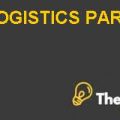Revolution at Oticon A/S (A) Vision for a change competent organization Case Study Solution
After assuming the likely responses of employees toward the changes, it is also highly crucial for the management to assume what it is expecting from its workforce. It is obvious that when management tries to implement a new vision it is assuming that employees must obey their decision. Same is the case with Oticon’s CEO, Kolind assumes that its labor will agree to his proposed decision and it will welcome it with an open hands. It is his assumption that employees must collaborate with his proposed plan of reengineering of vision for the new headquarter. Since the employees have already been working in a new management structure i.e. spaghetti organization therefore it is assumed that when the proposed vision will be implemented workforce would work toward the achievement of newly implemented vision and in order to tackle any kind of grievances administration must adopt proactive approach to put the freeze on rising resistance. Furthermore, it is also expected that employees will participate in the process of implementing new vision and if it is there any sort of misconception, reservation and suggestion on the part of employees, management will entertain them without any haughtiness. Lastly, it is also assumed that Oticon’s employees will also take active part in the proposition of new vision as it is an adage that “two heads are better than one”.
Assessment
Prior to implement the proposed change in Oticon’s vision, it is necessary to assess the organizational factors that impact the changes to get insight into whether the organization is in a position to implement a change or not. Organizational assessment will assist the Kolind to answer three different questions: what is the strength of evidence for the proposed vision? Is the organization in support of proposed vision? Has the organization capacity to facilitate change? Under the organizational assessment, these questions can be answered by evaluating the different factors that directly or indirectly involve in the change process.
Credibility of Proposed Vision
Firstly, it is advisable for Kolind to chalk out the fruits that will be reaped by proposed vision, what will be the probable outcomes of that vision, and how will it affect the productivity of organization as a whole. This information is imperative to gauge the credibility of suggested change.
Culture And Value System
Secondly, Culture and value system is important to evaluate because if the culture of an organization is supportive it will be in favor of proposed innovativeness. The culture of Oticon is totally supportive and equal value is given to each employee as there is no concept of hierarchy in the organization which shows that Oticon’s culture and value system is in favor of proposed vision for Oticon’s headquarter
Capacity for Change
Thirdly, it is also crucial to know whether the organization has such capability to implement the change or not. Kolind can evaluate the Oticon’s capacity for change in many ways. The organization is already operating in a changed structure that has been adopted in past few years. Therefore, it can be said that Oticon has a capacity for change. Moreover, it is also crucial to know what resources are available that company must require to make the change practicable. Oticon is a world’s largest hearing aid manufacturer and dealer and its financial statement is profound to support the change.
Leadership Style
Fourthly, leadership style that has been practiced in Oticon is laissez faire that only play a role of facilitator only when employees get stuck in difficult scenario otherwise no one has the authority to be imperious over other. Further, employees are free to choose their own team or group to work with which make them more prolific. This leadership style gives employees empowerment and authority to make decisions on their own. Therefore, it can be said that such style of leadership will give employees an opportunity to adopt and achieve the new vision the way they want.
Past Changes
Fifthly, it is blatant that Oticon has dramatically changed its management style that turned the organization into business tycoon in manufacturing, dealing and distributing hearing aid technologies. So it is ostensible that past change were in favor of Oticon’s profitability that depicts that proposed vision of new headquarter would also increment the profit of Oticon. Apart from it, past change also reveal that employees were aligned with the periodic change in organizational structure. In this pretext it can be argued that despite revolt and refusal of few resistant employees, most of the employees would accept this proposed vision of the new headquarter.
Tendency of Middle Managers
Sixthly, It is also advisable that predisposition of middle manager must be known as they are the major players in reinforcing the proposed change but in Oticon the concept of middle manager is nothing more than a proverb because the organization is running under the spaghetti style of management where middle managers are not required to spoon-feed the employees. Hence, it would be difficult for Kolind to reinforce its proposed vision for new headquarter on the working force. But the absence of middle managers is also in favor of Kolind as direct communication would aid him in sensitizing his vision in the workforce without any communication barriers.
Employees Readiness for Change
Lastly and most importantly, employees’ readiness for change is highly desirable to assess. Because no change can be implemented in true sense if employees are not in favor of it. in a given situation Otican’s employees and management refuse, resist and revolt the proposed vision of shifting of Oticon’s headquarter (Weiner, 2009)
Resistance to Change Transition
On the basis of organizational assessment as mentioned above, it can be excerpted that almost all the factors are in favor of Kolind’ proposed vision of new headquarter except the employees who are resisted to a planned shift of headquarter. No one can deny a fact that organization cannot impose any plan for reengineering, transformation or shift without employees’ acceptance to change. So, it is indispensable to assess the employees’ resistance to shift the Oticon’s headquarter. Primarily there are gargantuan reasons for the resistance to change which involve loss of job, bad communication strategy, fear of unknown, loss of control, lack of competence, poor timing, lack of reward, office politics, loss of support system, former change experience, empathy and peer pressure, lack of trust and support. Since, Oticon is based on spaghetti management style, out of all above mentioned there are few but ostensible reasons of employees and management objection for planned transfer of its headquarter.........
This is just a sample partical work. Please place the order on the website to get your own originally done case solution.












